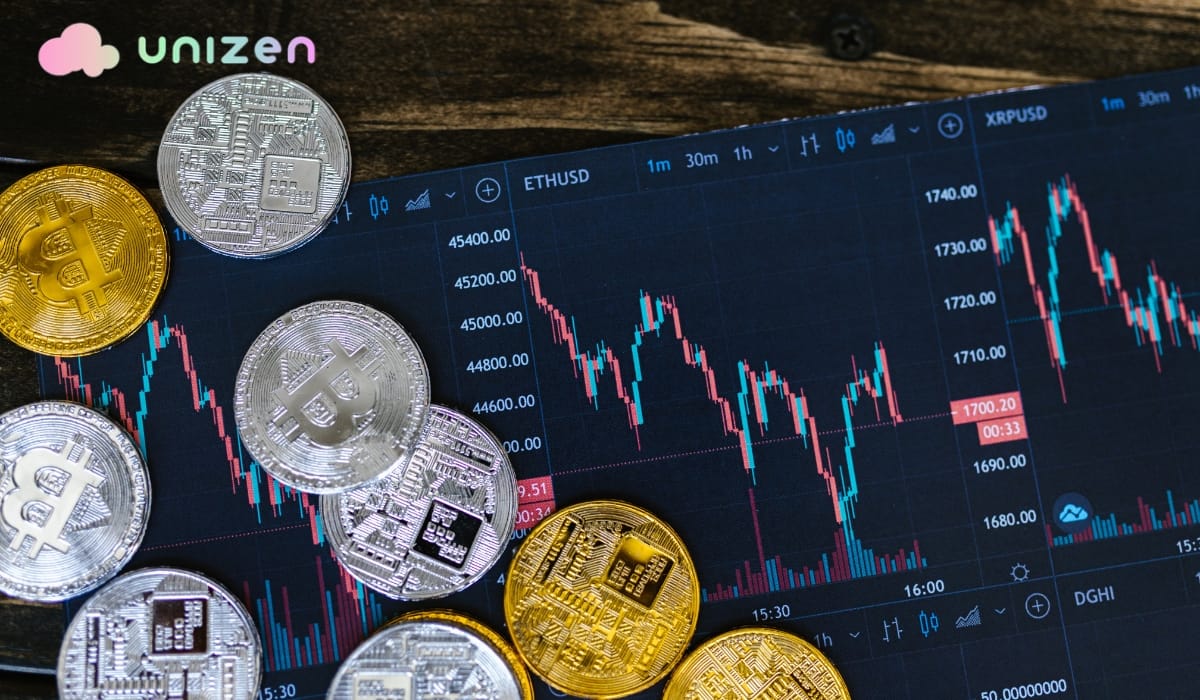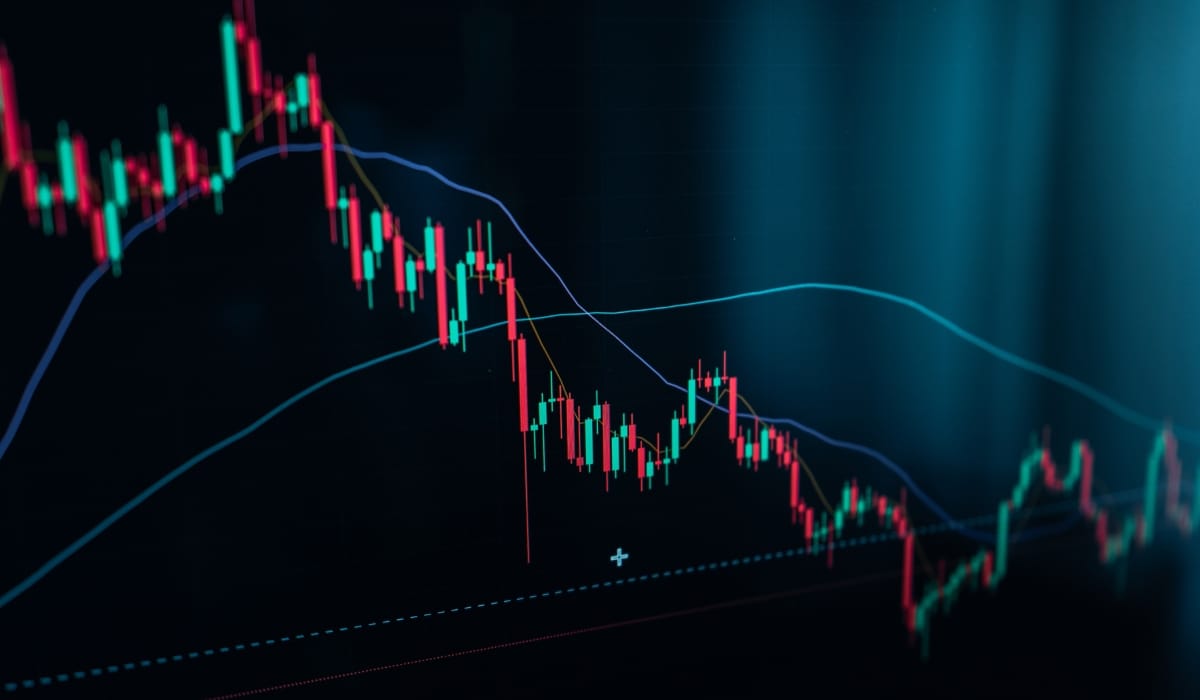Crypto Scalping Strategy
Learn effective crypto scalping strategies. This guide covers different techniques scalpers use to try and profit from small, short-term crypto price movements.

Crypto scalping involves rapidly trading cryptocurrencies to profit from small, short-term price fluctuations, typically within minutes or hours. Scalpers leverage automated trading platforms, algorithms, and high-speed direct market access to major exchanges to efficiently enter and exit orders as intraday volatility creates minute price changes. They meticulously monitor technical indicators to anticipate micro-movements and achieve steady gains by targeting numerous trades daily. While this approach spreads risk across many positions, it also subjects traders to increased danger from the compounding effects of frequent activity. Prudent money management through precise position sizing and defensive order parameters is vital to success, given crypto scalping's perilous pace.
In contrast, cryptocurrency swing trading focuses on holding each position for extended durations ranging from several days to several weeks. Swing traders capitalize on broader market swings and cycles using technical analysis fitted to longer time horizons. They take fewer overall trades yet accept elevated risk per transaction due to elongated exposure, a strategy used in day trading. However, concentrating risk in fewer structured wagers allows swing traders to harness sizable crypto price moves while maintaining lower net risk levels than scalpers. Success requires mastering techniques like trend analysis, recognizing buying and selling pressure signals, and the patience to filter high-probability setups from extended time frame price charts.
Key Characteristics of Scalping Trading Strategies
Scalping is a technique that involves making as many trades as possible during a trading session and holding those positions for only a few minutes or even seconds. It enables scalpers to benefit from very minute and short-lived changes in price. Due to the fast turnover of numerous intraday trades, scalping is a form of high-frequency trading strategy. Traders open and close dozens or even hundreds of micro-positions daily. The extremely short holding period distinguishes scalping from other strategies where trades are still actively managed but held open for hours, days, or weeks at a time to catch larger short-term swings in price action.
Importance of Market Volatility and Liquidity for Successful Scalping
For a scalper to capitalize on tiny temporary price movements, the markets must display enough volatility and two-sided trading activity. Without sufficient intraday fluctuations, prices may not fluctuate, even pennies in the scalper's favor within their short investment window. Liquidity is crucial to allow scalpers to enter and exit sizeable positions easily without noticeable market impact. Thinly traded illiquid assets preclude this strategy. Therefore, volatile forex pairs, commodity futures, and highly liquid stocks are typically more conducive to scalping than less active cryptocurrency trading markets.

Popular Crypto Scalping Strategies
Here are some popular cryptocurrency scalping strategies:
Range Trading
This involves striving to find prices that oscillate within a given range and then trying to make trades as the market bounces from the support and resistance levels. A band is used to set the upper and lower limits of the price, and traders actively trade when the price approaches or touches those limits. Range trading is advisable in sideways trending markets.
Arbitrage
Arbitrage means exploiting mere price disparities in different exchanges. For instance, if Bitcoin is priced at 10,000 USD on one exchange and 9900 USD on another, the arbitrage trader will immediately purchase the latter and sell on the former to make profits while waiting for the two prices to converge again. Often, this trading approach entails observing multiple crypto exchanges simultaneously and making quick switches from one exchange to another.
Bid-Ask Spread
Scalpers look to profit from the difference between the current best bid and ask prices on an exchange, also known as the spread. They will quickly buy at the current bid and sell into the ask, pocketing the difference. This strategy aims to accumulate many small profits from numerous trades since the spread is usually only a few dollars at a time. Having direct market access is important to place orders instantly.
Price Action
Also called chart patterns, price action scalpers watch short timeframes like 1-minute candles for technical chart patterns, such as head-and-shoulders tops or triangles. They enter positions as patterns complete and targets are reached, aiming to profit from small intra-range swings typical of a minute crypto scalping strategy. Key levels like moving averages also provide signals for entries and exits on the shorter timeframes preferred for the best crypto scalping.
Moving Average Crossover
Technical traders pay close attention to when a short-term trend appears to be gaining strength over a longer-term trend. They gauge this by watching when a moving average representing a shorter timeframe crosses above or below a moving average of a more extended period. Traders who follow these "crossovers" will then enter positions looking to ride the momentum implied by the signal. However, they know these small temporary trends won't last forever. So, they aim to jump in and out quickly, usually closing out the trade within just a handful of candlesticks, to capture what small potential gains they think these fleeting movements may offer. The theory is that while trends on such tight timeframes are inherently unstable and won't persist for long if you can correctly time these short-term cross-based signals, there is still an opportunity for profits. You need to be very nimble getting in and out. It's a strategy focused on profiting from the short-term fluctuations implied by moving average crossovers.

Tools and Techniques for Scalp Trading in Crypto
Moving Averages
Beyond simple crossovers, scalpers watch moving averages closely for signals. Common strategies include trading pullbacks to or bounce off the 10-period MA on the 5-minute chart. The moving averages help identify entry points consistent with the short-term trading style. Traders need to enter and exit positions quickly before the results are negated.
RSI Oversold/Overbought
The relative strength index spots short-term overbought and oversold levels on lower timeframes. Scalpers watch for RSI divergences or crosses below 30 or above 70 as cues to enter pullbacks or continuations of the trend. They aim to profit from the subsequent oscillations within the normal RSI range. With scalping, trades are closed out in mere moments before indicators flip.
Bollinger Band Bounces
When the price touches the upper or lower band on a chart with tight Bollinger Bands set to standard parameters, it often bounces sharply in the opposite direction. Scalpers watch for these signals and trade the resulting volatility, hoping to profit from the mean-reverting property as price returns between the bands after its brief extensions in their trading approach. Exits are timed for quick gains.
Automated Trading
Some sophisticated traders program trading bots to implement their minute crypto scalping strategy and scalp cryptocurrencies on their behalf. Well-designed trading bots can enter and exit positions within seconds based on predetermined indicators and criteria, allowing traders to benefit from 24/7 frequency even while asleep. However, onboarding costs and upkeep requirements limit automation to experienced users who can effectively use trading tools.
High-Speed Execution
To profit from the tiny intraday opportunities that are scalping targets, traders need brokers and trading platforms allowing millisecond-quick order placement. Direct market access is important to avoid delays. Traders must also decide and enter/exit positions at lightning speed based on fast-changing price actions and indicators. Quick reflexes are crucial alongside technical prowess.
Market Conditions for Effective Crypto Scalp Trading
High Volatility
Volatile markets provide more opportunities for scalpers because prices constantly fluctuate within small ranges. When markets experience sharp swings up and down in short periods, scalpers can capitalize on these intraday price movements. They look to generate many smaller profits from frequent trades rather than holding positions long-term. Volatile markets fueled by catalysts like economic data releases or geopolitical events create an environment with ample short-term price fluctuations. Scalpers can enter and exit trades quickly as prices bounce around, aiming to buy a contract or share below the current price and sell it back slightly higher within minutes or hours. The rapid ups and downs foster an atmosphere where consistently profitable scalps are more within reach.
Liquidity Considerations
For scalping strategies to work, the markets traded must maintain sufficient liquidity. Scalpers require the ability to instantly buy and sell their positions without dramatically moving the price. Thinly traded commodities, currencies, or stocks do not provide this level of liquidity and can expose scalpers to high costs from the bid-ask spread. Traders scalping the forex, equity index, and cryptocurrency markets benefit from very high liquidity levels, allowing for seamless entry and exit of positions. With deep market pools of buy and sell orders, scalpers face minimal risks of slipping fills or being stuck with unwanted long or short exposure after their trades on crypto exchanges. High trading volumes are crucial to scalping small intraday moves.
Influence of Market Sentiment
Breaking news and shifts in overall market sentiment can open opportunities for scalpers or pose risks in crypto trading. When a major announcement triggers volatile price swings, it introduces potential intraday trading ranges for crypto assets. However, scalpers must be careful not to get caught in a position if a news headline completely changes the market direction. Similarly, reading evolving sentiment through order flow data, social media activity, and technical indicators helps scalpers identify early signs of trending behavior versus the continuation of sideways volatility. Awareness of macro factors influencing micro price action allows them to scalp strategically with the prevailing computer-generated trading algorithms.
Risk Management in Scalping Trading System
Risk management is indispensable for cryptocurrency scalpers due to the high risks inherent to their fast-paced activity and small margins in margin trading, especially when utilizing crypto scalping indicators. Strict settings and controls protect against catastrophes that could otherwise happen in a blink due to poor strategy or emotions running amok.
- Stop-Loss Orders: The most crucial risk management tool is setting tight stop-loss orders after each entry to define acceptable maximum losses strictly. Scalp trades may only last a few minutes, so stops need to be within a few percentage points to avoid being stopped by volatility. Stops enforce discipline to exit losing trades quickly.
- Risk-Reward Ratio: Because individual scalps have low-profit targets in the 1-3% range, traders must aim for rewards significantly higher than risks to succeed in the best crypto scalping. A minimum risk-reward ratio of 1:2 is recommended to achieve positive expected value over many crypto trading trades. This ratio relies on hits outweighing occasional missed stops or losses for profitability overall.
- Position Sizing: Only risking a set percentage of capital per trade, like 0.5-2%, helps manage drawdowns from periods with fewer wins. Position sizing is dynamically adjusted based on volatility and a string of results. Never over-leveraging ensures a blow-up from one bad scalp is avoidable.
- Emotions and Discipline: Scalping involves a rapid series of many small trades. Emotions like fear and greed can disrupt the disciplined approach needed, leading to worse entries/exits or overtrading. Traders must detach feelings from quick decisions and stick coldly to their proven trading style. Taking occasional breaks keeps mental clarity sharp for high-pressure moments.
Pros and Cons of Crypto Scalping
Here are the key pros and cons of scalping, a popular trading strategy.
Pros of scalping
Here are some of the main pros of cryptocurrency scalping:
- High-Frequency Trading: Scalping allows traders to capitalize on many short-term moves throughout the day by executing numerous trades rapidly. This high frequency of activity increases the likelihood of profits compared to holding more prolonged positions in cryptocurrency trading. These profits can be redeemed at Unizen.
- Profit from Volatility: Crypto markets experience much volatility in shorter timeframes, like minutes or hours. Scalpers aim to profit from this volatility by carefully observing price fluctuations and reacting to scalping indicators during the trading day. Higher volatility means increased opportunity.
- Small Capital Required: In contrast to position trading, scalping requires less capital since positions are very short-term and gains per trade are smaller in the context of crypto scalping. This makes it an accessible strategy for retail traders with limited budgets to participate meaningfully.
- Leverage Benefits: Leverage multiplies gains when used responsibly on scalps entering and exiting within hours or less. Compounding frequent small profits quickly adds up to larger ones with leverage applied. However, risk increases as well if not managed carefully.
- Practice Risk Management: Because positions are kept very short, the maximum downside is stringently limited if stop losses are always set according to risk parameters. This allows traders to practice and improve their skills with a higher frequency of outcomes than holding longer.
- Emotional Detachment: Short holding periods necessitate cold, objective decision-making detached from emotional swings since setups happen in rapid succession. This discipline benefits psychological trading performance in the long run.
high stress
Here are some of the critical cons to consider with cryptocurrency scalping:
- Small Profit Margins: Since each scalp aims to close within minutes or hours, profits on individual trades are indeed minimal, often just 1-3%. To be consistently profitable, this requires high accuracy over many trades.
- High Risk of Losses: While stops help, a single losing trade can easily wipe out several winning scalps due to the tight margins. This increases the pressure and risk of compounding losses compared to other strategies.
- Demanding Time Commitment: Spotting and acting on many fleeting short-term signals daily requires focused market watching, which requires extensive hours or a full-time commitment. Leisure activities are sacrificed.
- Stress and Fatigue: Rapid, pressurized decisions and frequent trading involve high stress levels. Decision-making clarity and risk management can deteriorate, resulting in fatigue without adequate breaks.
- High Information Processing: Sorting signals from noise across many timeframes and indicators places intensive information processing demands on the scalper's mind. Mistakes may slip in more easily versus more straightforward approaches.
- Slippage and Fees: Each roundtrip trade incurs small costs that compound over many trades. This can significantly reduce profits. Traders must factor in costs versus opportunities.
- Suitable Platform Needed: For the fastest execution, a powerful trading platform and server with low latency are vital to compete effectively. Many retail traders cannot replicate such infrastructure.
Conclusion
Crypto scalping provides experienced cryptocurrency traders with an exciting high-frequency approach to profit from the volatile intraday price movements common in crypto markets. However, it also comes with substantial challenges given the tiny profit margins, relentless demands on time and focus, and unforgiving nature of frequent trading. Only traders with the aptitude for disciplined and methodical risk management, dispassionate decision-making under pressure, and an infrastructure capable of lightning-fast executions should consider scalping their primary strategy. It is not a realistic option for many retail investors. For the right individuals, cryptocurrency scalping has the potential to produce consistent profits through leveraging short-term opportunities. But its unforgiving nature also brings an ever-present risk of losses that can rapidly outweigh any gains without precision. Success in the long run demands flawless methodology, constant practice, and refinement of one's skills.
In the end, whether scalping proves lucrative or disastrous depends entirely on the trader's commitment to retaining their psychological and statistical edge through strict protocols, controls, and preparation for high-maintenance activities. For those up to the task, it offers a challenging yet potentially rewarding approach. However, its constraints also make alternative trading styles preferable for the majority. In volatile cryptocurrency markets, scalping thrives on extracting pips but offers slim margins for error. Only resolute traders able to balance their pros and cons decisively through discipline are poised to benefit from its high-octane approach in the long run. Overall, it signifies one of the riskiest yet most responsive pathways to profits available.



